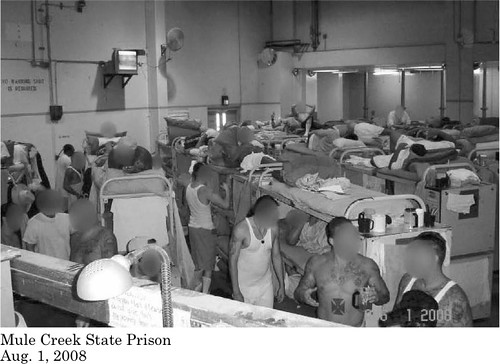By Gary Cohn
In a move to slash the retirement benefits of public employees in California, a group of mostly conservative policy advocates has been working behind the scenes on a possible 2014 ballot initiative. A copy of the still-secret draft initiative, which could dramatically impact the lives of hundreds of thousands of Californians and send a signal nationwide, has been obtained by Frying Pan News. (See the document’s text following this article or click here.)
If enacted, the proposed law would allow the state and local governments to cut back retirement benefits for current employees for the years of work they perform after the changes go into effect. Previous efforts to curb retirement benefits for public employees have largely focused on newly hired workers, but the initiative would shrink pensions for workers who are currently on the job.
“This initiative defines that a government employee’s ‘vested rights’ only applies to pension and retiree healthcare benefits earned for service already rendered, and explicitly empowers government employers and the voters to amend pension and retiree healthcare benefits for an employee’s future years of service,” the private draft states.
In other words, current state and municipal workers’ retirement benefits will only be partially guaranteed by the number of years they have already worked; from the time the initiative becomes law, the accrual of those benefits will be drastically curtailed.
One of the rationales provided by the draft ballot to justify its unprecedented reach into the lives of public employees is the ongoing funding shortfalls that California and many of its cities find themselves confronting. But, while pledging to help the state “maintain retirement plans that are sustainable, fiscally sound and able to meet the commitments to its employees,” the draft also claims its reduction of pension benefits is being carried out “[i]n order to protect the government’s ability to provide essential services to the public.”
The draft initiative is being circulated by San Jose Mayor Chuck Reed, who successfully pushed a pension-busting ballot initiative in his city’s 2012 election. That law, like a similar one passed the same year in San Diego, is currently being challenged in court. Reed, according to several sources, has been circulating the draft among other mayors, public officials and others in California who believe that public employee pensions should be scaled back.
Following repeated attempts to reach Reed for comment on the draft ballot, Frying Pan News received what appeared to be confirmation of its authenticity in an email sent by a Reed press aide:
“Throughout this process, there have been numerous discussions about policy options and multiple versions of draft language, so it’s impossible to tell what it is you may have. However, the substance of that statement is consistent with what the Mayor has advocated for more than a year.”
Marcia Fritz, president of the California Foundation for Fiscal Responsibility, goes further and says, “I’ve seen the draft – I don’t know if it’s final yet. I’ve been asked to weigh in on it.”
Dave Low, chairman of Californians for Retirement Security, a coalition that represents more than 1.5 million public employees, says that the draft measure being circulated by Mayor Reed and others would “take promised retirement benefits away from teachers, nurses, firefighters and other public employees.” He adds that courts have consistently decided that it is not permissible to cut promised retirement benefits to public employees. “A promise made should be a promise kept,” Low says.
Chuck Reed, a Democrat, has increasingly been seen as the public, bipartisan face of a nationwide effort to scale back retirement benefits for public employees. But behind the scenes, this effort is quietly spearheaded by a host of largely conservative individuals and organizations.
In May, for example, Reed was only one of dozens of people present at a closed-door pension summit held at a Sacramento hotel, where strategies to limit public retirement benefits were discussed. And earlier this week, Frying Pan News reported that the Pew Center on the States, an arm of the respected Pew Charitable Trusts, had formed an unusual partnership with the Laura and John Arnold Foundation in an effort to curb public employee pensions in several states.
The movement to curtail public employee pension benefits in California is being watched closely around the nation. Both those who favor curbing pensions and those who oppose it agree that any ballot initiative, such as the one laid out in Reed’s blueprint, will involve a lengthy and costly fight.
“The problem with initiatives is that public employee labor unions are very strong in fighting them,” says Jeff Adachi, the elected Public Defender in San Francisco and the man behind an unsuccessful initiative to curb pension benefits in that city. “It’s a tough route to go.”
That would seem to be borne out by reactions to Reed’s initiative from organized labor, whose representatives blame politicians’ inability to find the resources to give retirees the benefits they promised workers in the form of negotiated contracts. They also point to figures put out by the California Public Employees’ Retirement System (CalPERS) showing that the average public employee retires on only $2,629 a month.
Others decry what they regard as the naked unfairness of having rules changed on them in mid-career. One such person is Lori Adams, a 46-year-old Burbank High School math teacher. She has been a public school teacher for 16 years and is planning to teach for at least another 14 years.
“If you went to a bank and made an agreement for a car loan or a house loan, and then in the middle years they decide to change your rate – that’s not fair,” says Adams, who is also president of the Burbank Teachers Association. “It’s making a deal when you sign it and in the middle of the game changing the rules. You make life decisions based on it.”
Marcia Fritz and others, however, see the ballot initiative as an opportunity to clarify what they regard as murky rules regarding state and municipal workers’ retirement plans.
“It’s putting public employees on the same page as employees in the private sector,” says Fritz. Yet initiative opponents, including Jennifer Baker, a retirement expert with the California Teachers Association, see no reason why public employees should be placed in the same category as workers in the traditionally more lucrative private sector.
“If individuals don’t make high salaries,” Baker says of public employees, “at least they have modest retirement benefits. If you’re going to cut that, you’re going to discourage potential teachers – people with bachelor’s or master’s degrees – from even considering entering the profession.”
——————————————
Text of draft ballot initiative:
OBJECTIVE:
In order to protect the government’s ability to: a) provide essential services to the public, and b) maintain retirement plans that are sustainable, fiscally-sound and able to meet the commitments to its employees, this initiative empowers the people of California to take the actions necessary to control the escalating costs of public employee retirement benefits.
INITIATIVE PROVISIONS:
This initiative defines that a government employee’s “vested rights” only applies to pension and retiree healthcare benefits earned for service already rendered, and explicitly empowers government employers and the voters to amend pension and retiree healthcare benefits for an employee’s future years of service.
– These provisions would apply to all future government employees.
– These provisions would apply to all current government employees, unless there is clear and convincing evidence that his/her employer intended to create a vested right to a particular level of retirement benefits for future years of service.
– The initiative would also allow all government employers to temporarily amend its retirement benefits for all employees’ future years of service if: a) they are facing a fiscal emergency or b) their retirement plan is “at-risk” according to the standards established by the federal government for private pension plans.
[Note: this provision remains subject to further refinement and discussion] For any public employee plan that is “at-risk” as defined by federal laws governing private pension plans, the government employer will be required to prospectively modify its employee pension benefits in such a way that will lift the plan out of “at-risk” status within XX years. If such action is not taken within two years, the government employer would be required to… (Potential Options: require employees to pay 50% of all pension costs, increase employee and/or employer contributions into the plan by XX, etc.)
Nothing in this initiative affects the retirement benefits that a government employee has earned and accrued for prior years of service.
Government employers and/or the voters would be required to wait until current labor contracts expire before adopting any changes to employee retirement benefits.
This initiative prohibits the State of California, CalPERS, and other government boards from interfering with elected leaders’ or voters’ ability to amend their public employee pension plans for employee’ future years of service (this includes prohibiting CalPERS from charging exorbitant termination fees to government employers who wish to amend their pension plans).
This initiative would apply to the State of California and all political subdivisions of the state, including, but not limited to, counties, cities, school districts, special districts, boards, commissions, the University of California, and California State University.
(Gary Cohn writes for Frying Pan News.)
 Governor Jerry Brown waited until late Friday to veto legislation requiring coroners to report to the medical board whenever narcotics cause deaths. The medical establishment has opposed the bill, which is aimed at weeding out the small number of dangerous and drug dealing doctors who are responsible for the vast majority of prescription drug overdose deaths.
Governor Jerry Brown waited until late Friday to veto legislation requiring coroners to report to the medical board whenever narcotics cause deaths. The medical establishment has opposed the bill, which is aimed at weeding out the small number of dangerous and drug dealing doctors who are responsible for the vast majority of prescription drug overdose deaths.







